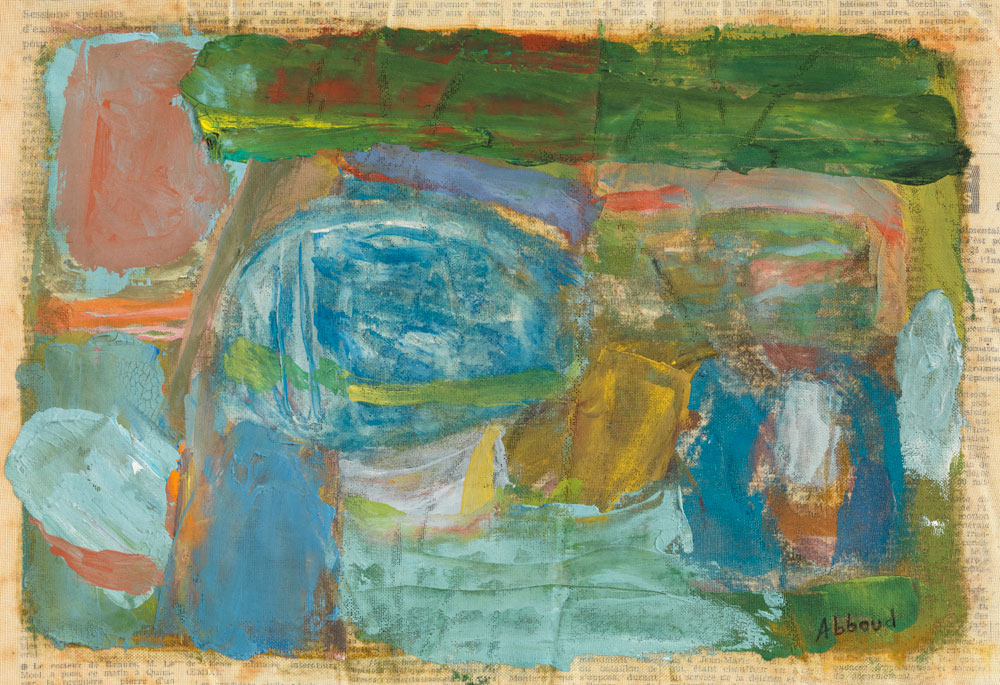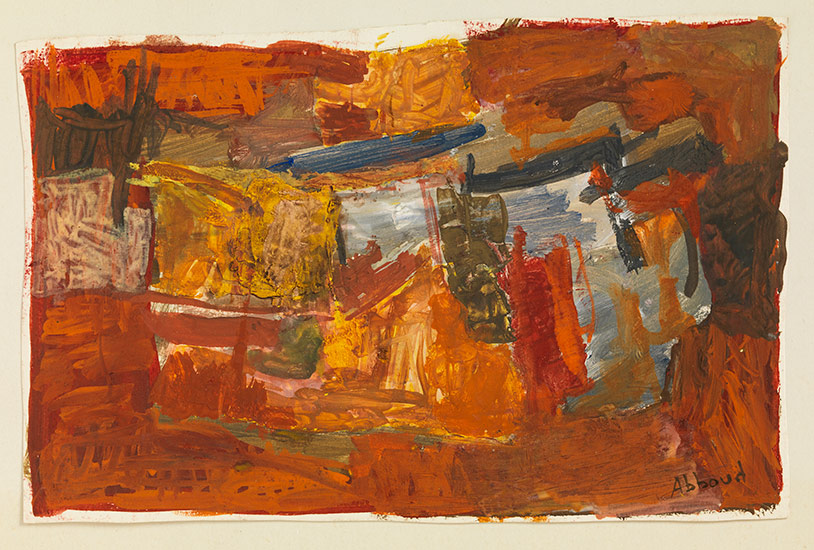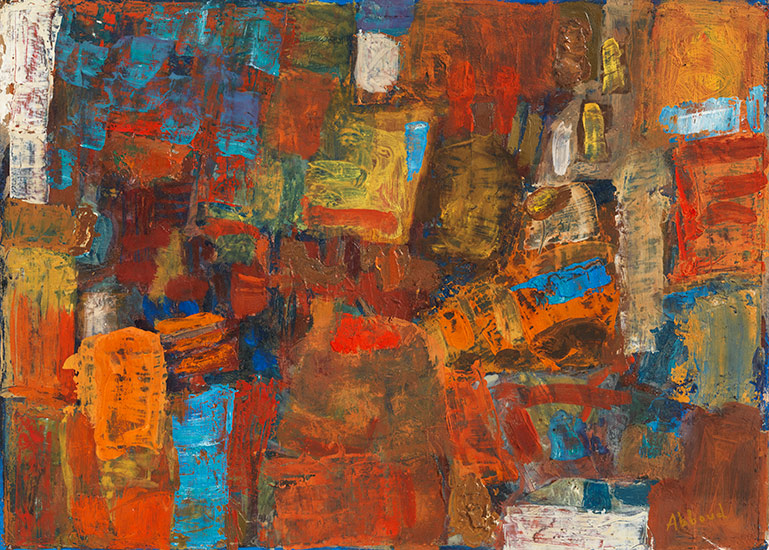Shafic Abboud (born in Lebanon in 1926) was one of the most well-known 20th century Lebanese painters. Growing up, Abboud split his time between the city of Beirut and the mountains of Lebanon. The landscapes of Mount Lebanon would remain a theme in his art throughout his life. He graduated from the Lebanese Academy of Fine Art in 1947 and moved to Paris shortly afterward. Inspired by the works of Nabis painter Pierre Bonnard, Tachism artist Roger Bissière, and abstract landscape artist Nicolas de Staël, Abboud switched from figurative paintings and landscapes to the newly emerging Abstract Expressionist style. He worked in the studios of renowned abstract artists André Lhote and Fernand Léger, and in 1952, began classes at the École Nationale des Beaux Arts in Paris.
His works were known for their use of color and light, and the incorporation of Lebanese culture and landscapes and Byzantine storytelling traditions. He was included in the first Paris Biennale in 1959, received the Prix Victor Choquet in 1961, and the Prix du Salon d’Automne from the Sursock Museum in Lebanon in 1964. Abboud lived and worked in Paris until his death in 2004.
The Centre National d’Art et de Culture Georges Pompidou in Paris houses many of his works and in 2011, a retrospective of his work was held at the Institut du Monde Arabe (IMA) in Paris.





